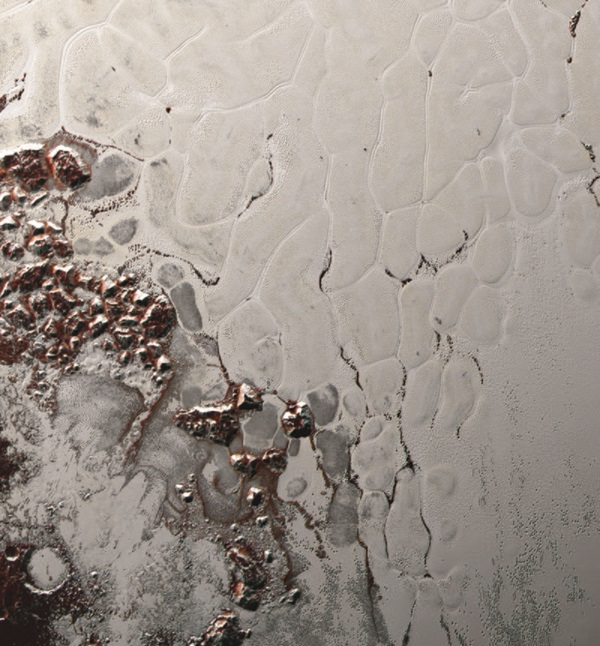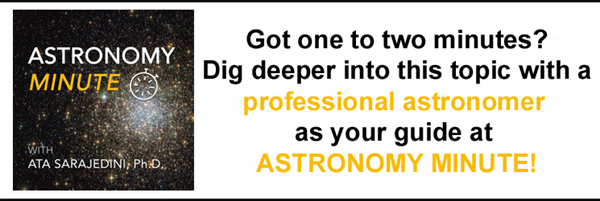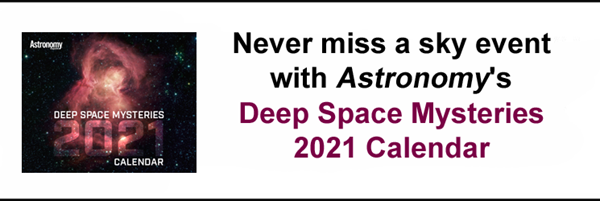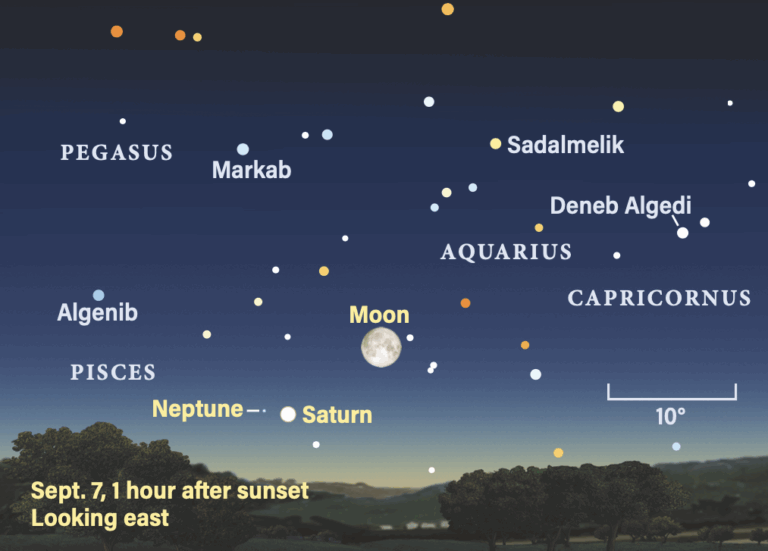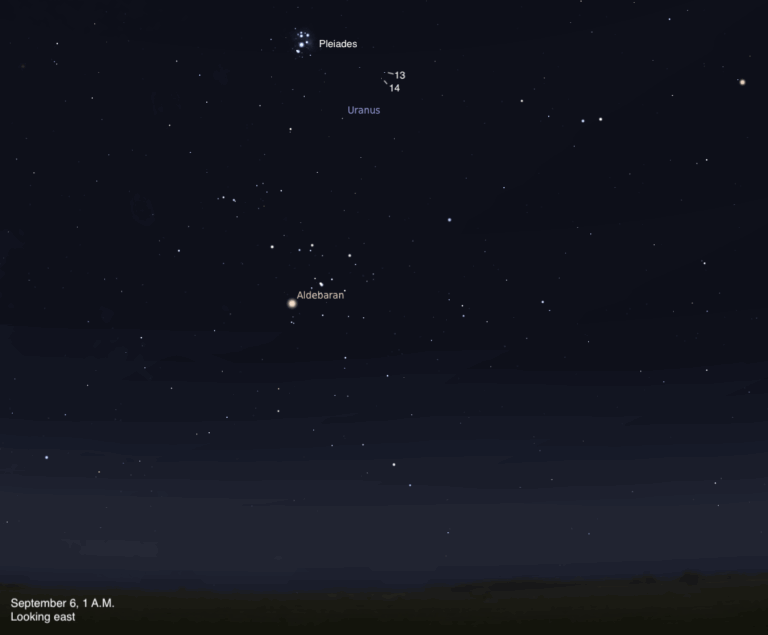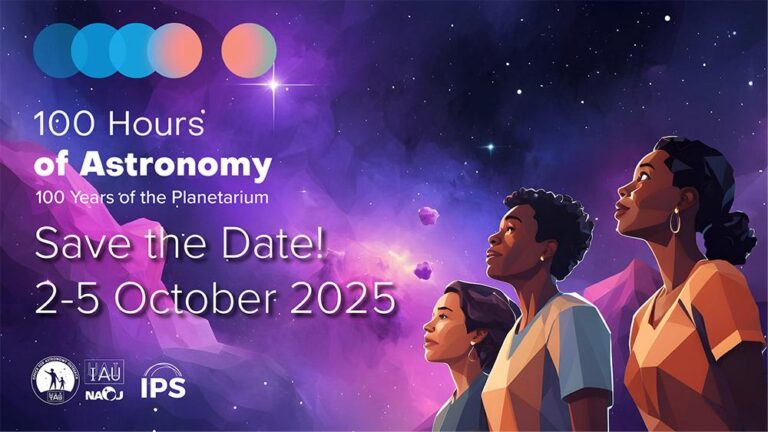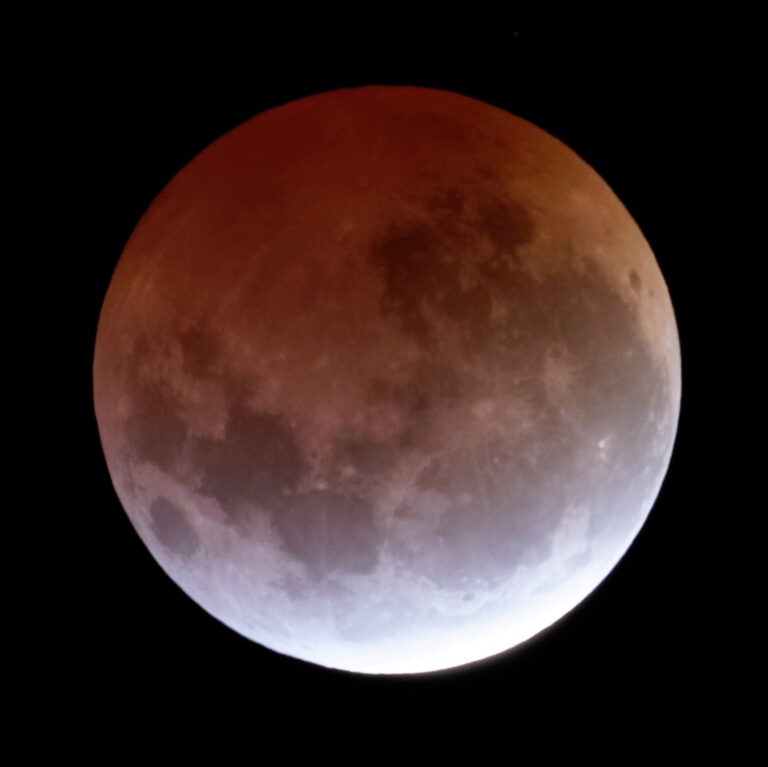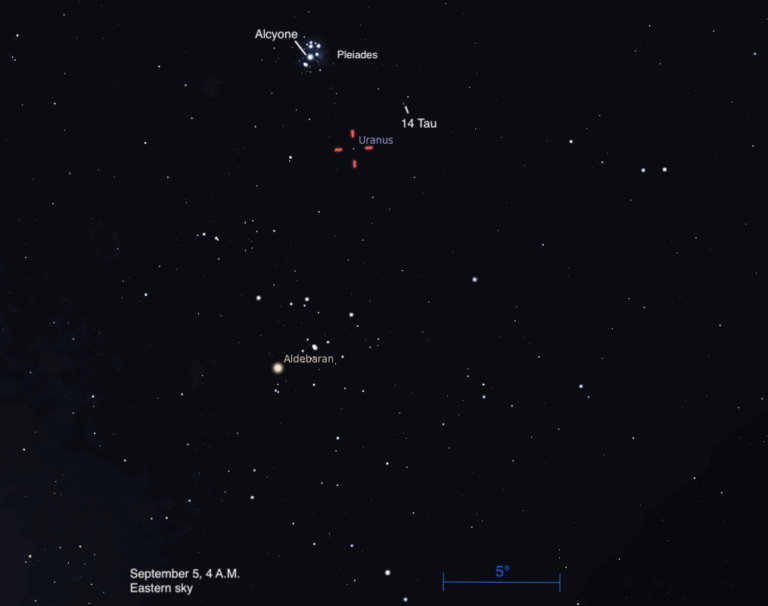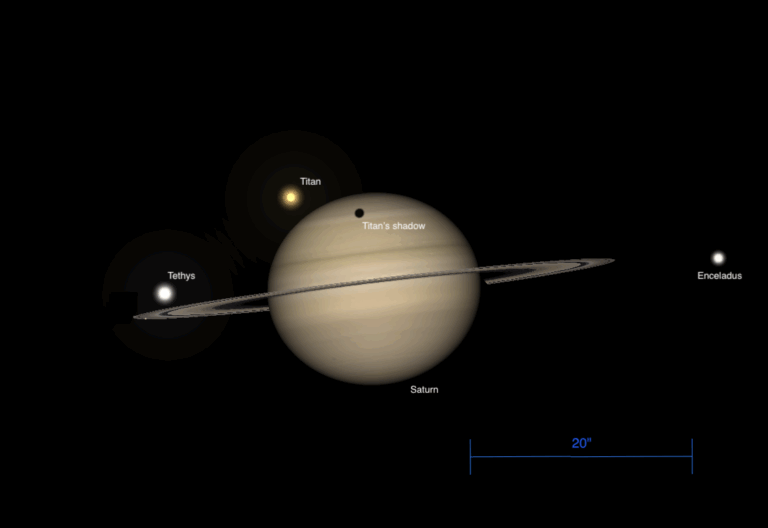Key Takeaways:
Shortly after sunset, the familiar constellation Orion stands high in the southeastern sky. But there’s a lesser-known figure at the Hunter’s feet: Lepus the Hare. Covering just 0.7 percent of the sky, Lepus has only two named stars: Arneb (magnitude 2.6) and Nihal (magnitude 2.9).
Within the Hare’s domain is the globular cluster M79. At magnitude 8 and spanning 7′, it requires binoculars or a small telescope to spot. Larger apertures or higher magnifications will discern individual stars within its densely packed boundary. You may note its somewhat unusual location — most globular clusters appear in the direction of Sagittarius, the Milky Way’s center. This one, however, sits in the opposite direction on the sky. Astronomers think M79 may have once belonged to another galaxy — the Canis Major Dwarf Galaxy — which the Milky Way is in the process of tearing apart and absorbing.
Sunrise*: 6:56 A.M.
Sunset: 5:33 P.M.
Moonrise: 7:50 A.M.
Moonset: 6:33 P.M.
Moon Phase: Waxing crescent (1%)
*Times for sunrise, sunset, moonrise, and moonset are given in local time from 40° N 90° W. The Moon’s illumination is given at 12 P.M. local time from the same location.
Mercury passes 4° north of Jupiter at 2 P.M. EST today. The pair is visible — if challenging — early this morning just before sunrise. Saturn and Mercury rise roughly level with each other about 6.3° apart just before 6 A.M. local time. Mercury is a dim magnitude 3 and only 15 percent illuminated, so you’ll need binoculars to see it. Saturn is an easier magnitude 0.6.
Jupiter — a bright magnitude –2 — will rise about 15 minutes later, a smidge less than 4° southeast of Mercury. Follow the pair as long as you can, but take care to stop observing with any type of optics several minutes before local sunrise.
Today also marks the start of the I Heart Pluto Festival, a six-day-long celebration of one of our solar system’s most beloved objects. This year, the festival is going entirely virtual, with talks, tours, an art show, and a ham radio event — all free and open for the public to attend. The lineup includes talks by New Horizons Principal Investigator Alan Stern, retired NASA astronaut Nicole Stott, Charon discoverer Jim Christy, and Astronomy Editor in Chief David Eicher. Visit iheartpluto.org for more information.
Unfortunately, Pluto itself is tricky to see right now. Rising just after 5 A.M. local time, the dwarf planet is a mere magnitude 15, meaning you’ll need a telescope to spot it. The brightening background sky and Pluto’s low altitude further complicate matters. Still, although it is a challenging object, more experienced observers with a clear view of the southeastern horizon may want to give it a try.
The Moon passes 4° south of Neptune at 12 P.M. EST; the gas giant is near the Sun and sets about two hours after our star, but we’ll visit it briefly later this week for a look.
Sunrise: 6:55 A.M.
Sunset: 5:34 P.M.
Moonrise: 8:18 A.M.
Moonset: 7:37 P.M.
Moon Phase: Waxing crescent (4%)
The Heart and Soul Nebulae — IC 1805 and Westerhout 5, respectively — are large, stunning emission nebulae of hydrogen gas in Cassiopeia the Queen, who sits high in the north at sunset tonight.
Unfortunately, this pair is dim and difficult to see unless imaged by a camera. More experienced astrophotographers may want to aim for this pair tonight as a Valentine’s Day treat. But for casual observers, there’s still a tempting target in this region: the small open star cluster Melotte 15. This magnitude 6.6 cluster sits more than 7,000 light-years away, nestled in the center of the Heart. It’s also a much better visual target than the surrounding emission nebula. You can find it by looking 5° east-southeast of Segin (Epsilon [ε] Cassiopeiae).
Melotte 15 is roughly 1.5 million years old and contains several bright, white-hot stars roughly 50 times the mass of our Sun; it also houses many smaller members only a fraction of our star’s mass — unsurprising, since the universe preferentially forms small stars.
Sunrise: 6:54 A.M.
Sunset: 5:35 P.M.
Moonrise: 8:43 A.M.
Moonset: 8:38 P.M.
Moon Phase: Waxing crescent (9%)
Monday, February 15
Auriga the Charioteer is already riding high in the southern sky by sunset. His brightest star, Capella, shines a brilliant magnitude 0.1, making it easy to find above the trio of Orion, Taurus, and Gemini. In the southern part of Auriga is the beautiful open star cluster M37. You can find it either by skimming 5° southwest of magnitude 2.7 Bogardus (Theta [θ] Aurigae) or by looking 6.8° northeast of Elnath — Taurus’ topmost horn as the Bull climbs in the sky tonight and simultaneously Beta (β) Tauri and Gamma (γ) Aurigae.
M37 covers about 24′ on the sky and it’s bright — it glows with a total magnitude of 6.2, although its members sit roughly 4,500 light-years away. Astronomers estimate these stars are between about 350 million and 550 million years old. Smaller binoculars will reveal it as a hazy patch of light, but larger binoculars or even a small scope will split that light into at least a dozen stars. Larger scopes will bring out even more cluster members.
Sunrise: 6:52 A.M.
Sunset: 5:37 P.M.
Moonrise: 9:07 A.M.
Moonset: 9:39 P.M.
Moon Phase: Waxing crescent (15%)
Tuesday, February 16
The Moon passed Neptune a few days ago; tonight, you can find the icy planet in the constellation Aquarius. You’ll only have about an hour and a half after sunset, so as soon as the sky is dark, pull out your binoculars or telescope and look for 4th-magnitude Phi (φ) Aquarii in the west, beneath the Circlet of Pisces. Neptune sits about 2.4° to the star’s northeast. The planet glows at magnitude 7.8 and looks like a blue-hued disk just 2″ across.
After you’ve looked your fill, glance up and to the right of the region to find the Great Square of Pegasus. This asterism is formed by four stars: Markab, Algenib, Alpheratz, and Scheat. Above Pegasus is the constellation Andromeda, which also houses the Milky Way’s famous galactic neighbor, the Andromeda Galaxy (M31). On a dark night and from a good observing location, you may be able to spot this galaxy with the naked eye, just under 1.5° west of Nu (ν) Andromedae. Binoculars or a small scope will certainly show it, albeit as an elongated white-gray smudge. The better your magnification, the more detail you will be able to discern, including the galaxy’s bright core and wispy spiral arms.
Sunrise: 6:51 A.M.
Sunset: 5:38 P.M.
Moonrise: 9:30 A.M.
Moonset: 10:37 P.M.
Moon Phase: Waxing crescent (23%)
Wednesday, February 17
The Moon passes 3° south of the solar system’s other ice giant, Uranus, at 11 A.M. EST. It’s visible after dark, located in Aries the Ram. You’ll want binoculars or a small scope to easily spot the magnitude 5.8 planet about 9.5° southeast of Sheratan, the constellation’s beta star. The planet will appear as a 3″-wide blue-gray “star” that, like Neptune last night, has a flatter, more disklike appearance than the background stars, distinguishing it as a planet.
Once you’ve glimpsed the second-to-last planet from the Sun, there’s something else that’s sure to have already caught your eye: Look 15° east, near the border of Aries and Taurus, to see Mars. The Red Planet is an easy-to-spot magnitude 0.7, with a 7″-wide disk that, unfortunately, shows little detail through a telescope. Still, dedicated observers with larger instruments and video capture technology may be able to make out the bright Tharsis region in the center of the disk around 7 P.M. EST. By 9 P.M. EST, the brighter spot of Olympus Mons is coming into view in the northeast.
And stay tuned, because Mars isn’t through for the week just yet: Tomorrow, NASA’s Mars 2020 mission will reach the Red Planet.
Sunrise: 6:50 A.M.
Sunset: 5:39 P.M.
Moonrise: 9:54 A.M.
Moonset: 11:37 P.M.
Moon Phase: Waxing crescent (31%)
Thursday, February 18
The Moon reaches apogee — the farthest point from Earth in its orbit — today at 5:22 A.M. EST. At that time, it will sit 251,324 miles (404,466 kilometers) from our planet. Less than an hour later, the Moon passes 4° due south of Mars at 6 P.M. EST.
A few hours earlier, NASA’s Perseverance rover will land on Mars. The agency’s live coverage of the event will begin at 2:15 P.M. EST, with the landing slated for about 3:55 P.M. EST. You can catch the entire event below:
Today is also the 91st anniversary of the discovery of Pluto by Clyde Tombaugh in 1930. Although Pluto is difficult to see, there’s another dwarf planet that should be a little easier to spot: 1 Ceres, currently drifting against the background stars of Cetus the Whale. Still, you’ll need to move fast — it sets within two hours of the Sun.
You can find the magnitude 9 world about 3° northwest of Iota [ι] Ceti, near the border that Cetus shares with both Aquarius and Pisces. Binoculars or a small telescope should let you spot it. Ceres is much closer to Earth than Pluto — a little less than 4 astronomical units, as opposed to Pluto’s 35. (One astronomical unit, or AU, is the average Earth-Sun distance.) It’s so big and bright that it was the first main-belt object discovered when Giuseppe Piazzi identified it 220 years ago.
Sunrise: 6:48 A.M.
Sunset: 5:40 P.M.
Moonrise: 10:20 A.M.
Moonset: —
Moon Phase: Waxing crescent (40%)
First Quarter Moon occurs at 1:47 P.M. EST. This is a popular lunar phase for observers not only because the Moon is visible immediately at sunset (and even during daylight hours), but because the terminator — the line separating night from day — creates excellent contrast that immediately draws the eye.
In addition to the large, dark lunar “seas” visible in the upper and rightmost portion of the Moon tonight, take some time to look at the line of large craters in the southern hemisphere of our satellite, which are visible near the terminator. These include Ptolemaeus, Alphonsus, Arzachel, Deslandres, and Maginus, as well as numerous others. Use binoculars or a telescope to get to know these craters, studying their shapes, the features on their floors, and noting the illumination of their high walls. Over the next several hours and days, that illumination will change as the angle of the Sun shifts, creating a completely different landscape as the Moon waxes toward Full.
Sunrise: 6:47 A.M.
Sunset: 5:41 P.M.
Moonrise: 10:49 A.M.
Moonset: 12:36 A.M.
Moon Phase: First Quarter

